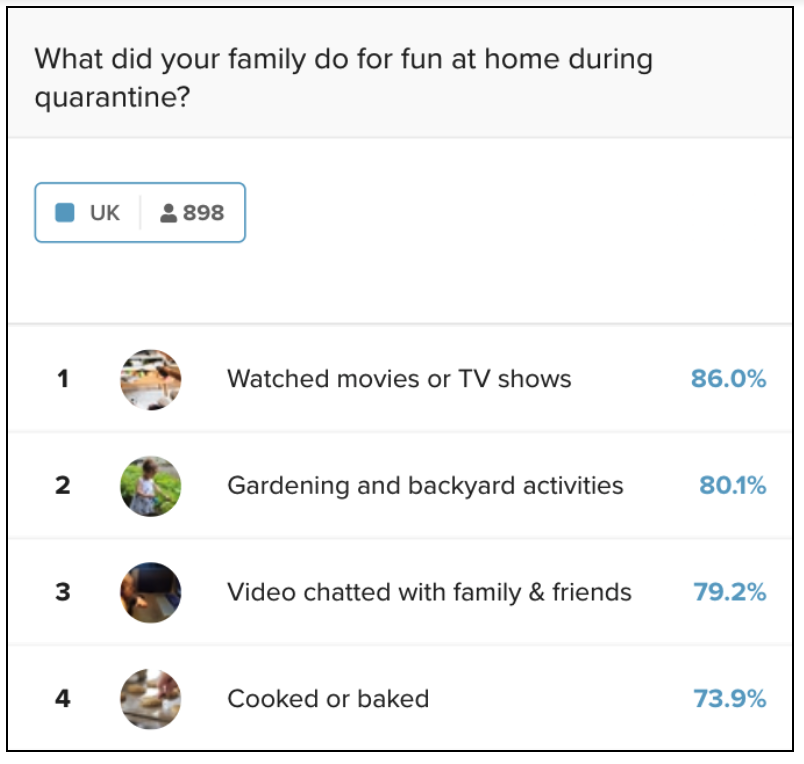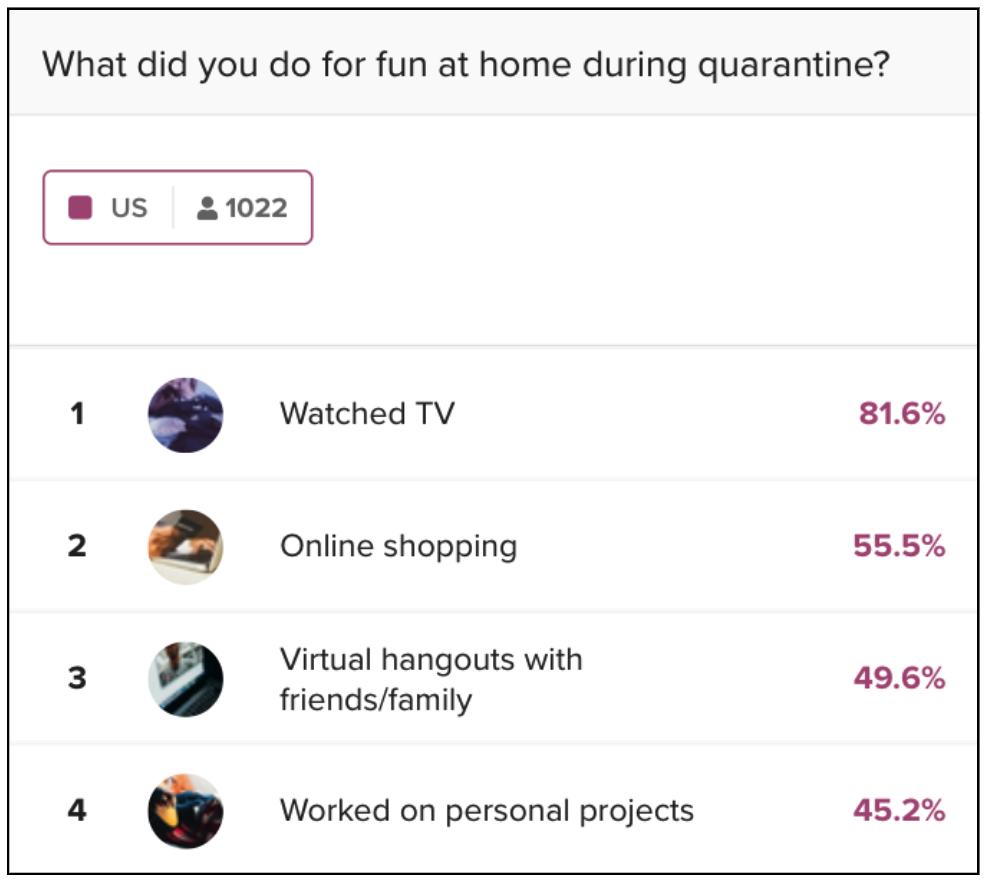This is the 6th insights digest of Segmanta’s Life During COVID-19 study. We conducted research in the US and the UK to understand how the recent pandemic has impacted consumerism, personal relationships, the job market, along with general beliefs and opinions during this unusual time. More than 2,000 respondents completed the survey.
Freedoms have been restricted due to the spread of COVID-19 and for some, constantly staying at home has become overwhelming. In between work, childcare, house chores, and adapting to the “new normal”, many are seeking to creatively keep themselves and their families entertained while staying safe.
We conducted a survey to find out what activities people did, as individuals or as families, to cope with the restlessness that can occur during social distancing. As mentioned in our previous article, most respondents (the majority of whom are mothers) felt rather positive about getting extra family time as a result of the pandemic, claiming that they benefited from spending quality time with their children.
Here are some key findings from the study.
As A Family
Watching movies or TV shows
The “go-to activity” for both the U.K.(86%) and the U.S. (88%) respondents were watching movies or TV shows. The home quarantine can be a great opportunity to binge-watch missed episodes or discover new television shows or movies. Watching movies or TV shows can also keep children occupied for working parents who are desperate to catch up on work.
Video chatting/virtual hangouts
An increased amount of screen time was spent by families who sought to connect with loved ones that they were not able to physically see during the lockdown. 79% of respondents said that they video chatted with family and friends during the pandemic.
Gardening work
Individuals in the U.S. are 16% less likely to spend family time gardening or playing in the backyard, compared to U.K. respondents (80%). U.K. parents are also 19% more likely to say that making sure their kids safely get enough outdoor time is a major challenge, compared to U.S. parents.

Cooking/baking
Cooking or baking is another popular (74%) family activity in both countries. Getting children involved in creative culinary events are great for learning new skills, participating in family activities, and keeping the kids entertained.
Playing with pets
U.S. respondents are 55% more likely to have spent significant time playing with their pets during the quarantine.
As An Individual
Watching movies or TV shows
Watching TV was the first choice of relaxation during the lockdown, including 82% of U.S. respondents and 78% of U.K. respondents.
Video chatting/virtual hangouts
Around half (51%) of respondents said they video chatted with family and friends as a leisure activity throughout the home quarantine. Human connection during quarantine is essential in preventing negative emotions like anxiety.
Online Shopping:
U.S. respondents are 21% more likely to shop online for fun during quarantine, compared to the U.K. respondents. While the retail industry is hit hard by the COVID-19 chaos, many brands are turning to e-commerce to make up for losses stemming from physical store closures. According to a Kantar study, 60% of consumers said they would continue to shop online even after the pandemic passes.

Working On Personal Projects
Interestingly, U.S. respondents are 55% more likely to spend time during the quarantine on personal projects, compared to U.K. respondents. For some, quarantine provides a rare opportunity to finally start a new hobby or improve an existing hobby.
. . .
Our study shows that for most respondents, kicking back and relaxing includes the use of electronic devices, whether it’s to communicate with loved ones or consume entertainment. As comedian Ronny Chieng said, we as a society are trying to fit more screens between our faces and the wall.
When the pandemic hands you lemons (apparently not so juicy this time), try and make the best out of the situation by enjoying the extra time at hand. All consumers encountering the COVID-19 situation changed their day to day habits. Some habits may stick after the crisis. It is crucial for marketers to understand these new demands from their audiences, and optimize their ad campaigns to account for changes in online shopping preferences, preference in home entertainment products, etc. Brands should promote a healthy homebound lifestyle (both physical and mental) during this unfortunate time.

